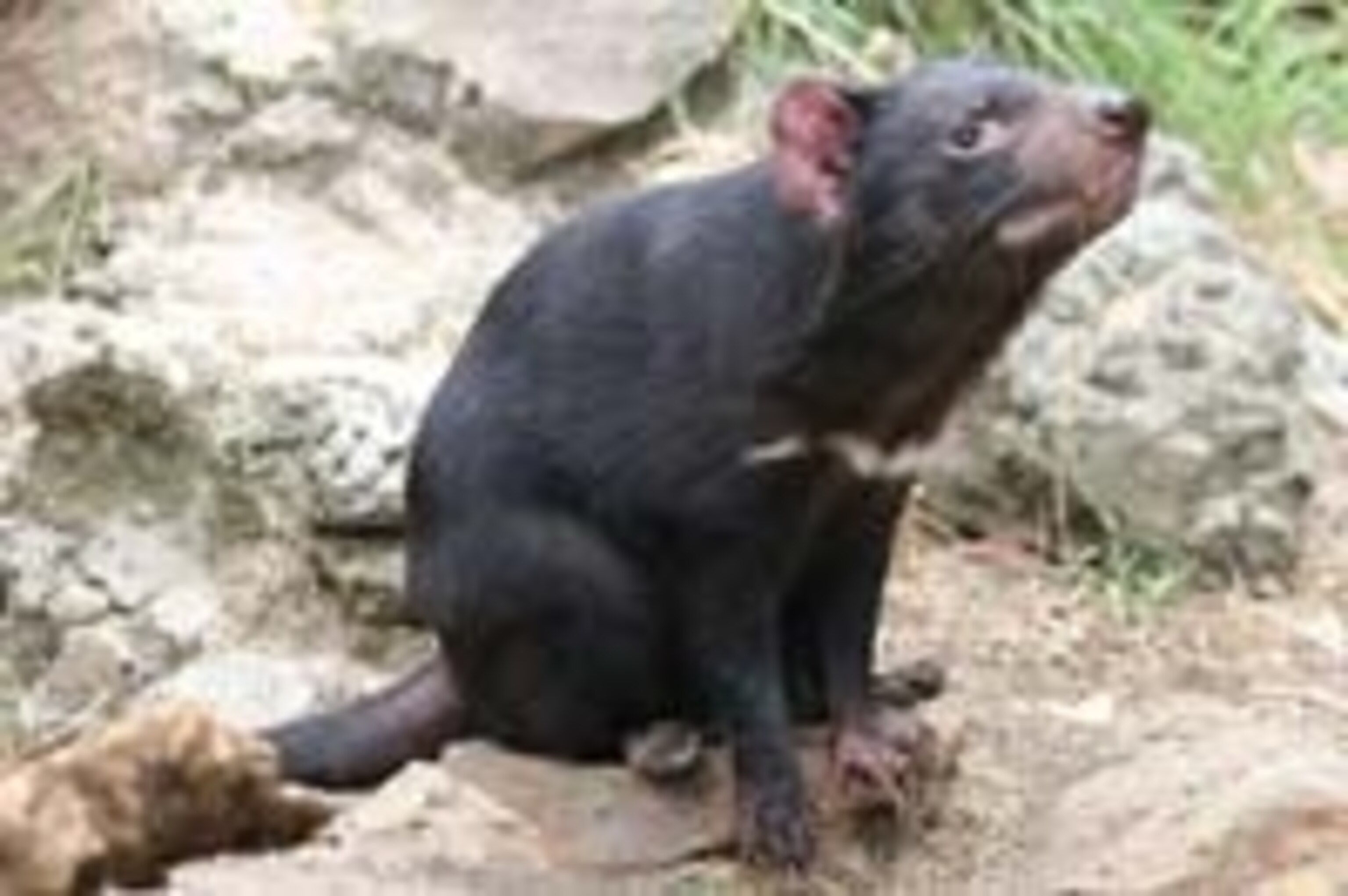Disease-ravaged devils have started living fast and dying young
Evolution dances to the tune of death. Killers – be they predators, diseases or competitive peers – can radically shape a species’ life cycles by striking down individuals of a certain age. The survivors respond by changing their “life histories” – a collection of traits that defines their reproductive cycles, including how often they breed, when they start to do so and how many young they have.

If an animal’s adult life is short and brutal, they tend to grow quickly and become sexually mature at a young age – a strategy that maximises their chances of siring the next generation. The Tasmanian devil may be the latest species to switch to this live-fast, die-young tactic, for their adult population is slowly being wiped off by a contagious cancer.
I’ve blogged about the disease before. Known as devil facial tumour disease (DFTD), it was first reported in 1996, when devils first started appearing with horrendous facial tumours. Since then, it has spread across half of the devil’s home range and has cut a swathe through its populations. Hamish McCallum at the University of Tasmania calculated that the disease, if left unchecked, could drive the Tasmanian devil to extinction within 20-25 years.
But amazingly enough, the devils have started to adapt. So fatal is the disease to adults that the devil population is getting younger and younger and Menna Jones, a colleague of McCallum’s, has found that they are starting to reproduce at a much earlier age too. The surviving devils are in a race against time to reproduce before the cancer kills them off.
Contagious cancer
Unlike all human cancers, the tumours that plague the devils are caused by cancer cells that have evolved into independent parasites. They are all clones, descended from a single ancestral tumour and possessing the ability to spread from devil to devil through bites. Unfortunately, bites are very common; Tasmanian devils are boisterous creatures and regularly squabble over carcasses and mates.
To make matters worse, they suffer from extremely low genetic diversity brought on after the last Ice Age squeezed their population through a narrow bottleneck. The variety in their immune system genes is so low that they can’t mount an effective defence against the infectious cancer cells.

Before the disease, a female Tasmanian devil would become sexually active at the age of 2, produce a litter every year for the next three years or so, before dying at the ripe old age of 6. But after the cancer started to spread, things changed dramatically. Jones studied devils from five sites across Tasmania, where they had been studied since the time before DFTD first emerged. By comparing 500 devils from the pre-cancer years with 269 from the post-cancer ones, she found that the arrival of the tumour has practically culled the older half of the population.
The survivors are almost entirely younger than 3 years of age and as a result, the females have far fewer chances to produce more than a single litter. Faced with just one shot at passing on their genes, the devils have responded by breeding early. Jones found that the proportion of 1-year-old females that started breeding shot up by 16 times after the arrival of the tumours. Before the cancer, just 0-13% of females would start reproducing at the tender age of one, but after the disease wiped out the elderly, anywhere from 13-83% of females started mating young.
A new strategy
Jones clarifies that so far, all she has found is a physical response. Rather than reflecting genetic evolution, the changes in the devil’s life cycle over such a short time span is almost certainly due to “phenotypic plasticity” – the ability of an organism to change its body and its behaviour to match its environment, without changing its genes.
It’s not a deliberate strategy. Jones believes that the plummeting population density has meant more food and less competition for the lucky survivors, which in turn fuel faster growth and earlier maturity. Indeed, the situation before the cancer also suggests that resources are important. Back then, early breeding was only ever recorded among Tasmanian devils populations living at sites with good soil and plentiful prey.
The devils’ new strategy isn’t unusual. In fact, they belong to a group of marsupials – the dasyurids – that are famous for repeatedly evolving a “live-fast, die-young” strategy. Many species, such as the mouse-like Antechinus hedge all their bets on a single, early bout of mating, and they invest so heavily in this lone breeding season that shortly after, their health is shot to pieces and all the males die off.
Cancer or nor cancer, Tasmanian devils already show a less extreme version of these symptoms – after their breeding seasons, males tend to suffer from weight loss, anaemia and weakened immune systems. As such, they seem to have been predisposed to shifting towards the type of strategies that their smaller relatives have made a success of. That flexibility may have bought them some extra time but according to Jones, “the prognosis for this iconic species remains uncertain”.
Reference: PNAS doi:10.1073/pnas.0711236105
